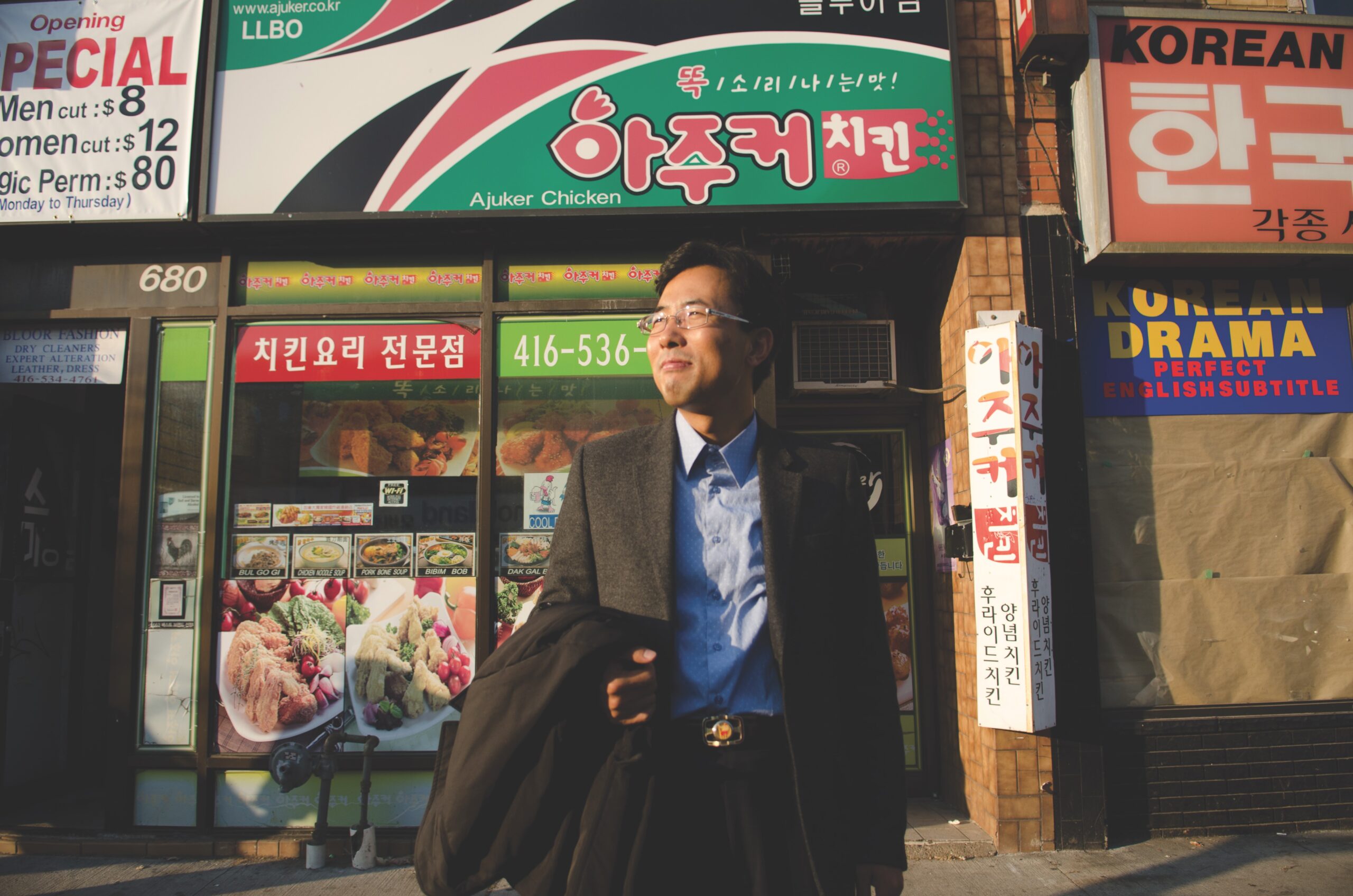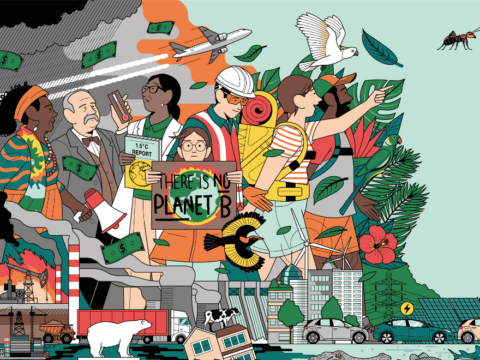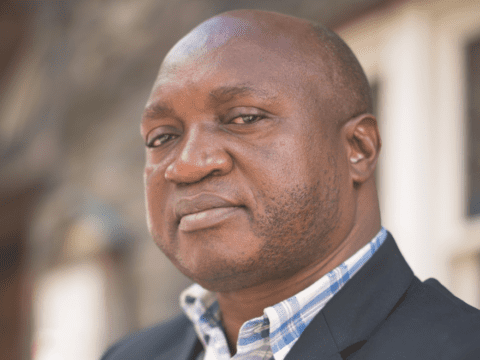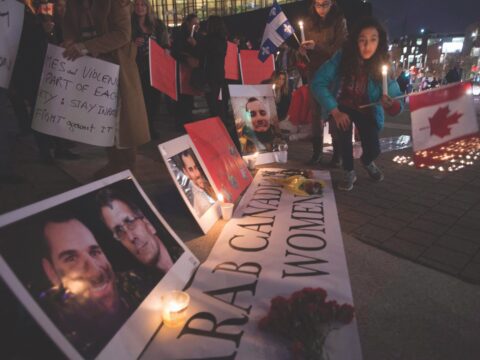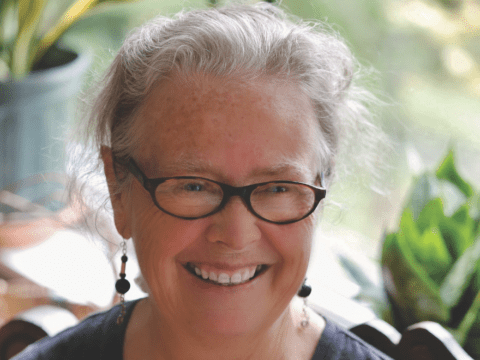Ye-Jun* remembers 1995 particularly well. That was the year of the famines and flooding and when his family fell apart. Many people died of hunger across North Korea, he says, including his father. Living on the outskirts of North Hwanghae Province and with nothing to eat at home, he and his mother and two sisters decided to split up to find jobs or beg in the capital. Ye-Jun was 11.
He hung around marketplaces in Sariwon doing casual work — carrying water for kitchens or begging — until he was old enough to start working at a nearby coal mine. He stayed for six years, hoping he’d meet up with his sisters again. It never happened.
When Ye-Jun turned 19, he headed for the northeastern shipping town of Chongjin to work as a porter. In early 2003, he met a man who claimed to have connections to China. Defection is a serious crime in North Korea, but scores of citizens do it each year, often through paid brokers who guide them across borders or bribe guards. Having heard of a Korean-Chinese community on the Chinese side of the border, Ye-Jun decided to take a chance.
That June, Ye-Jun and a broker headed to the Tumen River, which runs along the border with China, North Korea and Russia. Guards stand watch every 50 to 100 metres along this line, but it was a hot summer and every so often a guard would leave his post for a cool-down break. Confident they’d watched the guards do this for long enough, Ye-Jun and the broker cautiously crossed the river.
Ye-Jun, 28, is telling me his story in truncated, translated bits from a pew in Bloor Street United in downtown Toronto. He is one of about 30 North Korean refugees who attend church here every Sunday with Alpha Korean United, and one of an estimated 1,000 living in the Greater Toronto Area.
Though the congregation celebrated its 45th anniversary last year, it has only recently started to work with the city’s North Korean refugee community. In just under two years, Alpha Korean has helped to provide settlement services, English classes, translation and clothing drives.
Rev. Hae Bin Jung, who has headed the congregation for seven years, says that about 100 refugees have come through Alpha Korean while settling in Toronto. They have quickly become a significant part of the church’s membership.
Since the 1960s, much of Toronto’s Korean community has moved out of downtown and into the suburbs. The city’s original Koreatown along Bloor Street, however, is still home to many South Korean seniors and students, who make up a big part of Alpha’s congregation. Though Jung had heard of an uptick in North Koreans claiming refugee status in Canada since 2006, the first time one knocked at his door wasn’t until January 2011.
There is no such thing as easy settlement for refugees. But after escaping one of the most closed-off countries in the world, North Koreans new to Canada face unique challenges, he says. Language is a primary, if obvious, one. Every step of settlement requires booking a translator — from requesting an interview with immigration officials to apartment hunting to learning how to use a bank card. English aside, many of these things also come as a kind of culture shock.
“They don’t really understand the workings of a market economy and democracy and how the government might be there to serve you rather than to put surveillance on you,” says Ann Shin, a Toronto filmmaker and director of The Defector, a recently released documentary about North Korean refugees. “There’s a very strong cultural dissonance between defectors and Canadian citizens because of where they just came from.”
There is also the vulnerability that comes from networks of people fleeing a country in secret. Human trafficking of North Korean women is disturbingly common in China, a main escape route, where there is a market for “bought” wives and second wives in rural areas.
Then there’s the loneliness that comes from homesickness and fear. “They’ve just crossed a border at the expense of their life,” says Jung. “They don’t trust anyone and are often afraid of strangers, even fellow refugees. Many are always ready to move out before someone arrests them.” He has to consistently assure North Korean newcomers that they’re always welcome at the church.
On a blustery Sunday afternoon in October, Toronto city councillor Raymond Cho and his wife, Soon Ok, are showing me around Bloor Street United just after Alpha Korean has finished a Sunday worship service. The place is a hive of activity: English classes upstairs, a toast and tea social in the recreation room, baptism preparation in the chapel.
A slight woman in purple with tightly curled hair and delicate crow’s feet grabs Soon Ok’s hand and chats her up excitedly; she’d like to know about her wedding photos. She’s one of 30 refugees who got married in a summer celebration at City Hall last August. Cho, Jung and a number of local activist organizations worked together to host the event for the couples, many of whom met in transit.
A few of the couples, along with their newborn children, also took part in a group baptism ceremony on Christmas Eve. For Rev. Jung, “it is a joy to see people change their mind about life here.”
Ye-Jun made the dangerous dash across the Tumen twice. Shortly after his first attempt, he was caught by Chinese officials and sent back to North Korea. Caught defectors are often sent to one of the country’s re-education prisons and subjected to forced labour, malnutrition and torture. (The conditions in political prisoner camps, kwan li so, are said to be more severe.)
When he talks about the four years he spent in prison, Ye-Jun’s face darkens. Life after his discharge was more difficult than it had been before his first escape, as he’d been branded an ex-convict. In June 2009, he crossed the border again, staying hidden by working as a farmhand.
He started going to church — also something that could have landed him in jail at home. He met Song Ha (not her real name), a fellow refugee who’d escaped to China in 2008 and would later become his wife. A Korean minister from the United States helped the two of them fly to Canada. They arrived in Toronto in February 2012 not knowing Song Ha was pregnant. By the time their daughter was born in July, they had already found their way to Alpha Korean. Ye-Jun now volunteers at the church every Sunday.
The number of North Koreans defecting to Canada is rising quickly. In 2006, 26 North Koreans filed refugee claims. In 2012, that number had increased to 544 as of September, with an overall acceptance rate of 84 percent (the rate is a percentage of all finalized claims). Last year, for the first time, North Korea appeared on Canada’s list of top 10 refugee source countries. According to the Immigration and Refugee Board of Canada, the numbers on this aren’t entirely straightforward: many defectors who land in South Korea first also apply for refugee status but are counted as claims from that country.
It isn’t a coincidence that defectors often find their way to churches and non-profits for help in resettling, says Randall Baran-Chong, executive director of HanVoice, an organization that works with refugees in the Toronto region and campaigns for improved human rights in North Korea. “I think this government is willing to take on more North Korean refugees, but how do we do it responsibly and successfully?”
He points out that very few countries have policies geared specifically toward North Korean immigrants. One that does is South Korea, where the government-sponsored Hanawon resettlement program offers skills training, English classes and seed money to help refugees start new lives.
“We know Hanawon is under stress. South Korea has about 24,000 refugees, and they’ve had to build another facility for Hanawon because they just can’t handle the capacity. So they do need help, and they’re looking for other governments to assist with that,” says Baran-Chong.
In 2004, the United States passed the North Korean Human Rights Act, meant to encourage various government departments to assist North Koreans abroad, support organizations working for human rights and facilitate admission of refugees to the country. Despite this, only 23 North Korean defectors were admitted to the U.S. in 2011.
“South Korea has thrown a lot of money at the issue,” Baran-Chong says, “but it’s questionable how successful it’s been. In the U.S., they’ve spent very little of their resettlement money, if anything, on North Korea. So it’s been borne on the shoulders of non-profits and churches.”
They essentially do it out of their own pocket, he says. “We need to create programs that help [refugees] with resettlement, similar to Hanawon.
“It’s already spring, isn’t it?”
“Yes, it really is.”
Mary Nippak, a former professor at Ryerson University, is leading an English language class in the upper rooms at Bloor Street United. After Sunday worship, a collection of whoever’s there that day will show up for ESL education offered by volunteer teachers.
Raymond Cho leads me over to a young boy in a navy-blue jacket. He introduces the 10-year-old as Il-Sung, who came to Canada with his mother last July. He started Grade 5 in September, knowing only Korean and Chinese.
Il-Sung shows me his agenda, filled with neat, tiny print. Every day he writes a couple of sentences in Korean, Chinese and English and gives the book to Cho, who will write comments in the margins. “I’ve got hope for him,” says Cho. “I think he can be a top student next year.”
Ye-Jun also enrolled in school recently, attending ESL classes full time on weekdays. He’d like to learn enough English to get a job, and then save enough money to study interior design at college. It would almost be like following in the footsteps of his father, who was a carpenter. Watching his father make furniture, he says, is one good memory he has of home.
* Name changed to protect identity.
***
This story first appeared in The United Church Observer’s January 2013 issue with the title “Refuge on Bloor St.”

